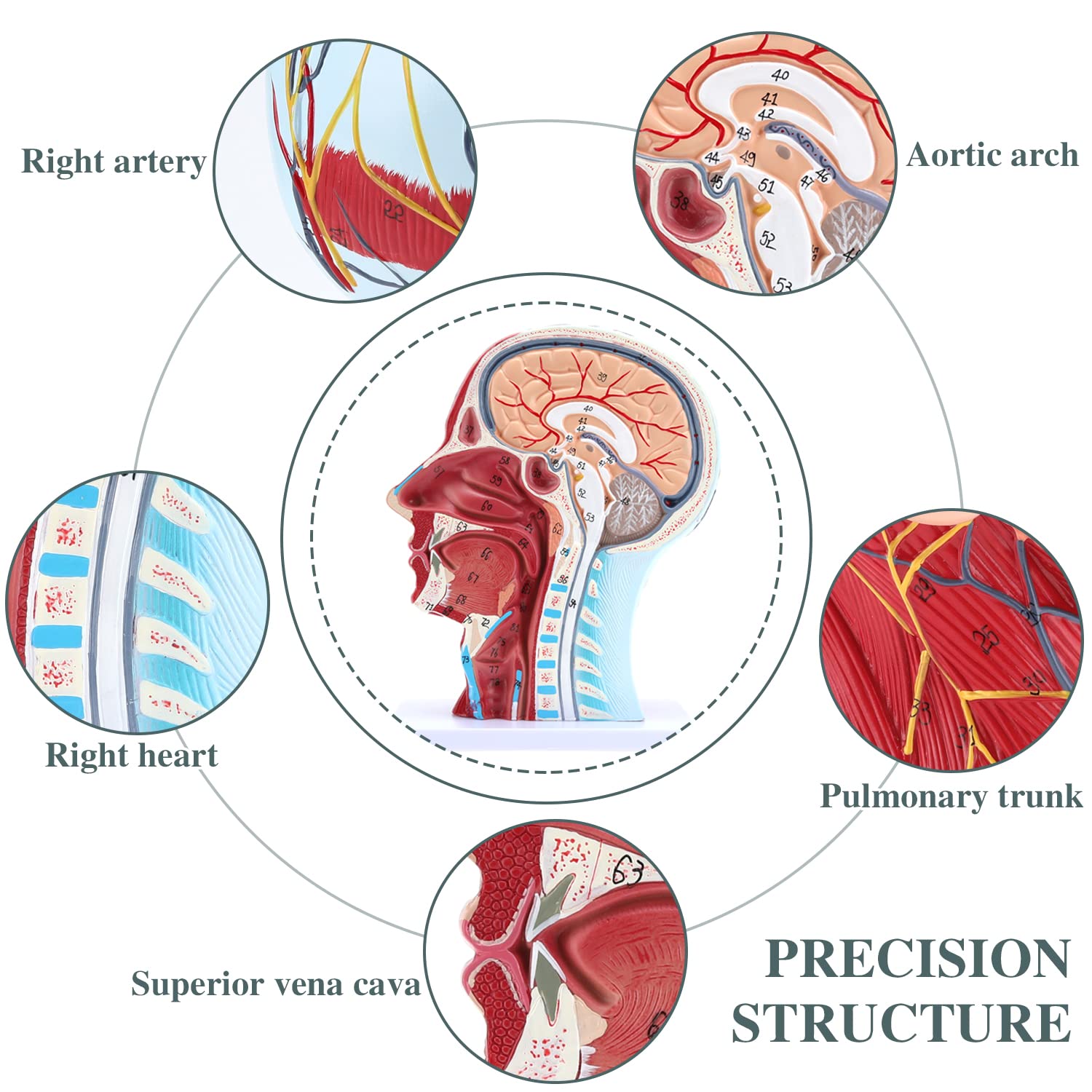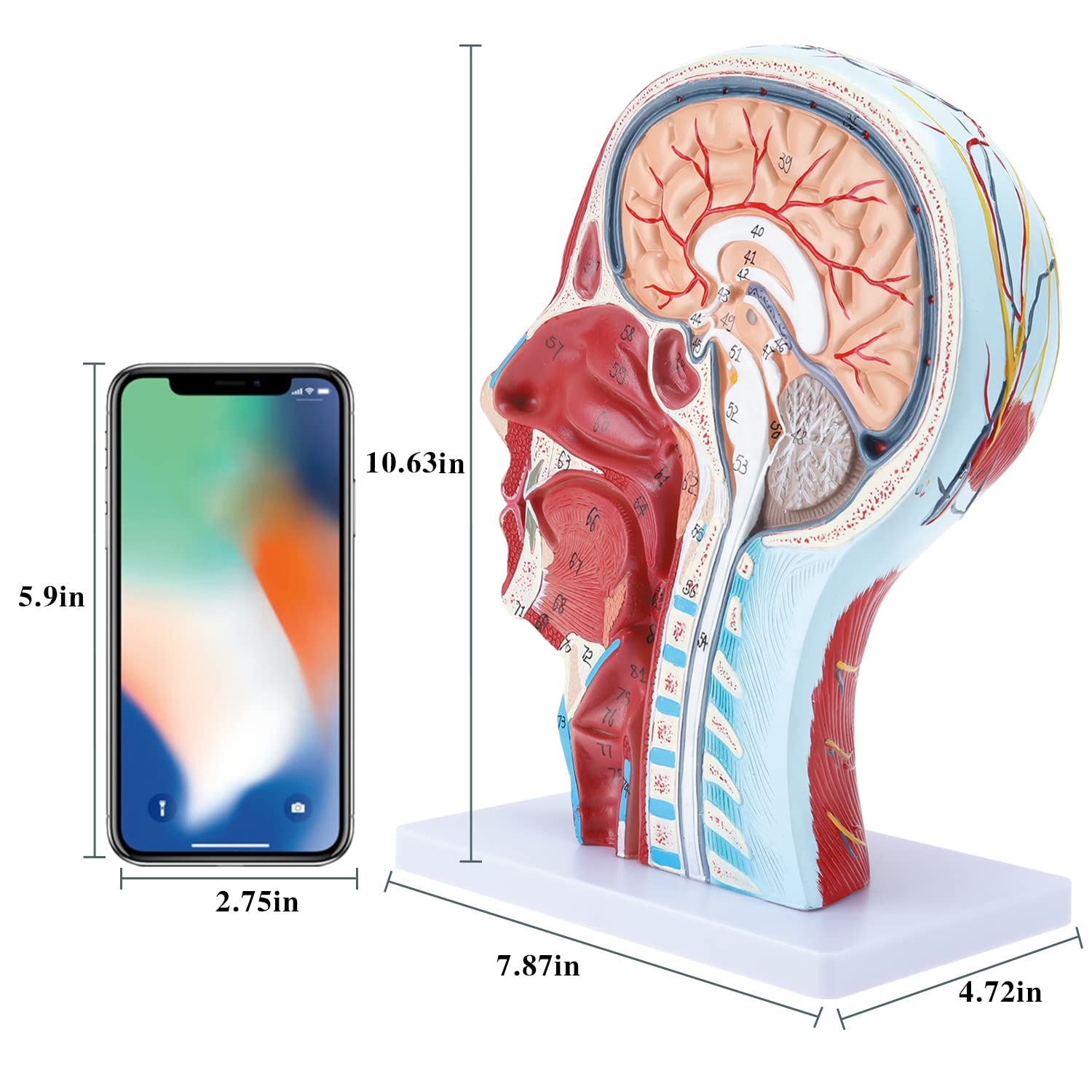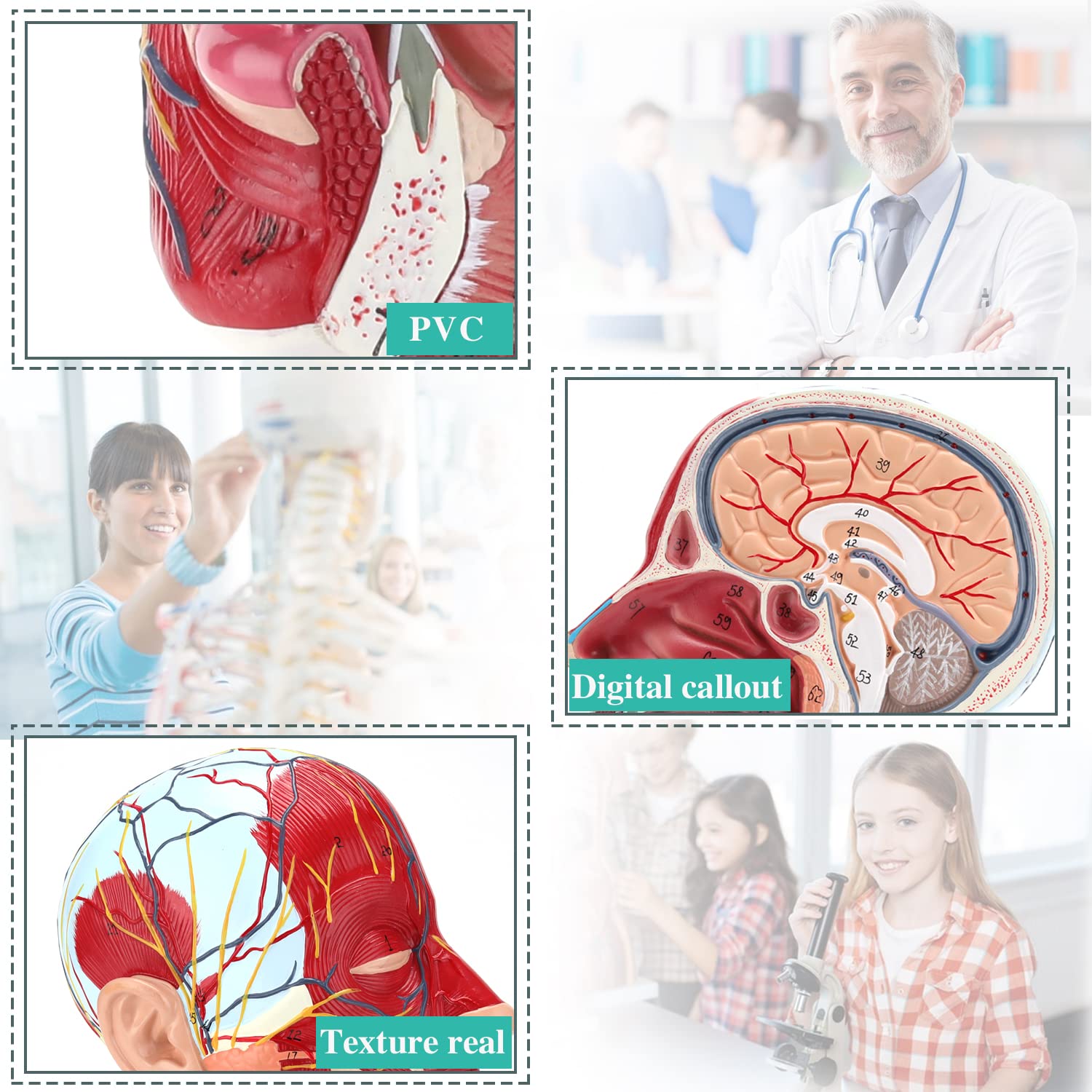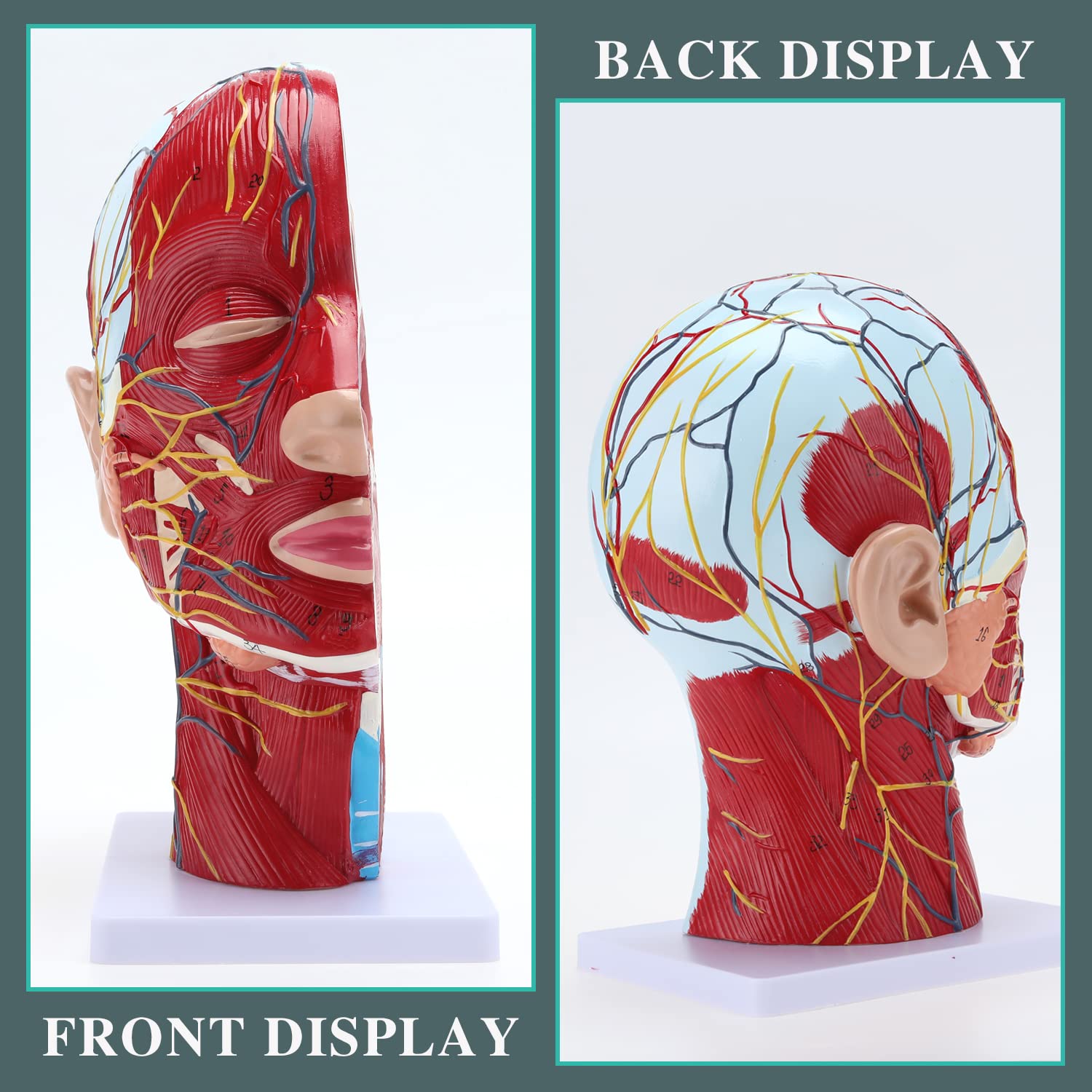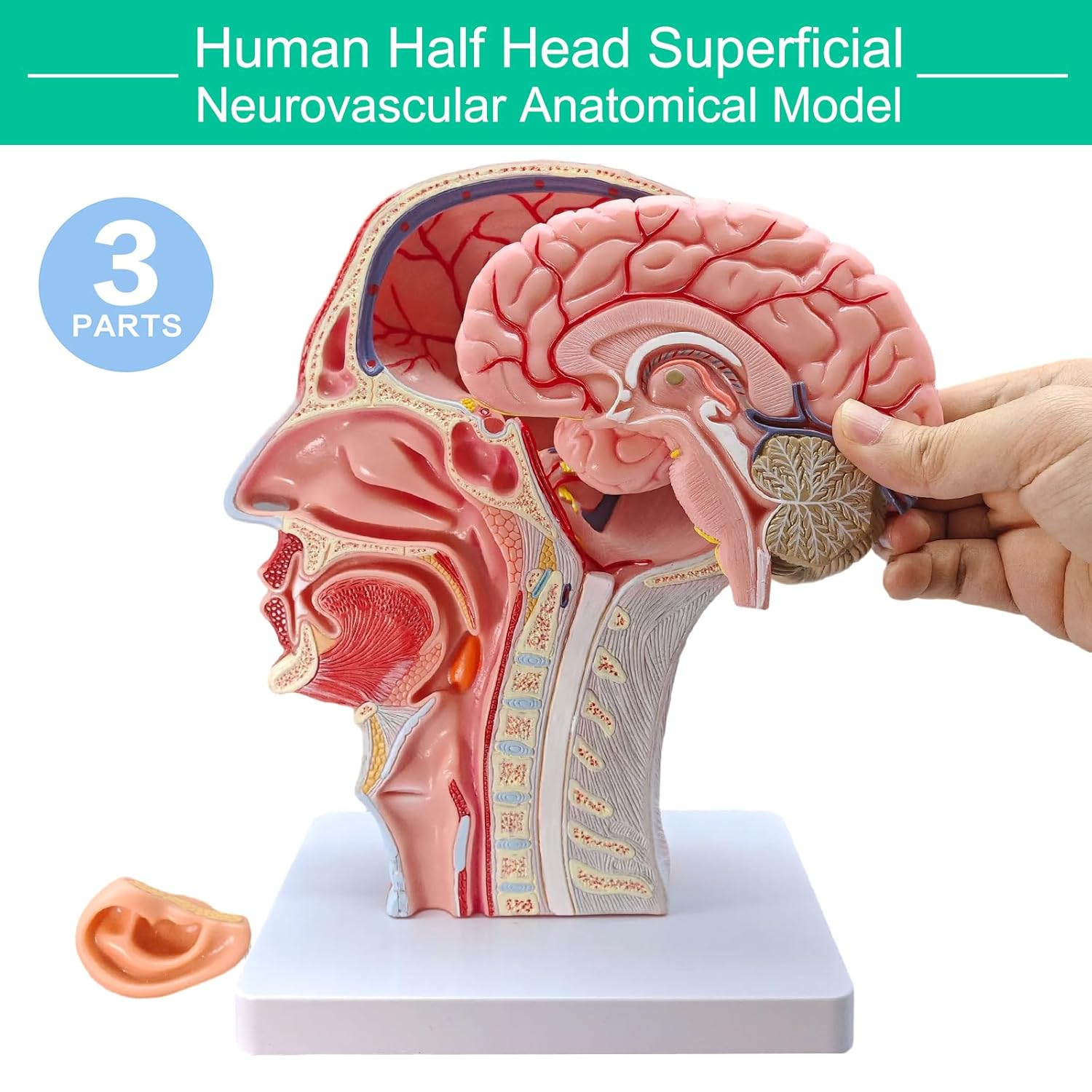The superficial neurovascular anatomy model of the half head has been introduced, revolutionizing medical education tools
Recently, a new half-head superficial neurovascular anatomy model has been unveiled, bringing a major breakthrough to the field of medical education.
This model accurately presents the superficial neurovascular structure of the head and neck, clearly showing the distribution and orientation of major nerves such as the facial nerve and trigeminal nerve, as well as blood vessels such as the carotid artery and external jugular vein. The model is made of non-toxic PVC material, which is safe, environmentally friendly and easy to clean. Its surface features 81 numbered anatomical markers, along with a full-color product manual, providing excellent learning guidance for medical learners at different stages.
In terms of application scenarios, in medical classrooms, teachers can use this model for theoretical explanations, making the originally abstract and complex knowledge of the head and neck nerves and blood vessels intuitive and vivid, and helping students better understand and remember. In the practical operation class, students can observe and touch the model up close, familiarize themselves with the actual location and shape of the neurovascular system, and lay a solid foundation for their future clinical operations. In addition, in medical research scenarios, researchers can use models to quickly locate relevant nerves and blood vessels, assisting in experimental design and research analysis.
In traditional teaching, the teaching of the neurovascular structure of the head and neck is abstract and complex, making it difficult for students to understand. The emergence of this model makes teaching more intuitive and vivid. Teachers can achieve precise explanations with the help of models. Students can quickly master relevant knowledge by observing and touching, which greatly enhances the teaching effect.
Industry insiders say that this model will become a powerful assistant in medical teaching, research and clinical practice, and is expected to push medical education to a new height and help cultivate more outstanding medical talents.
Post time: May-29-2025


